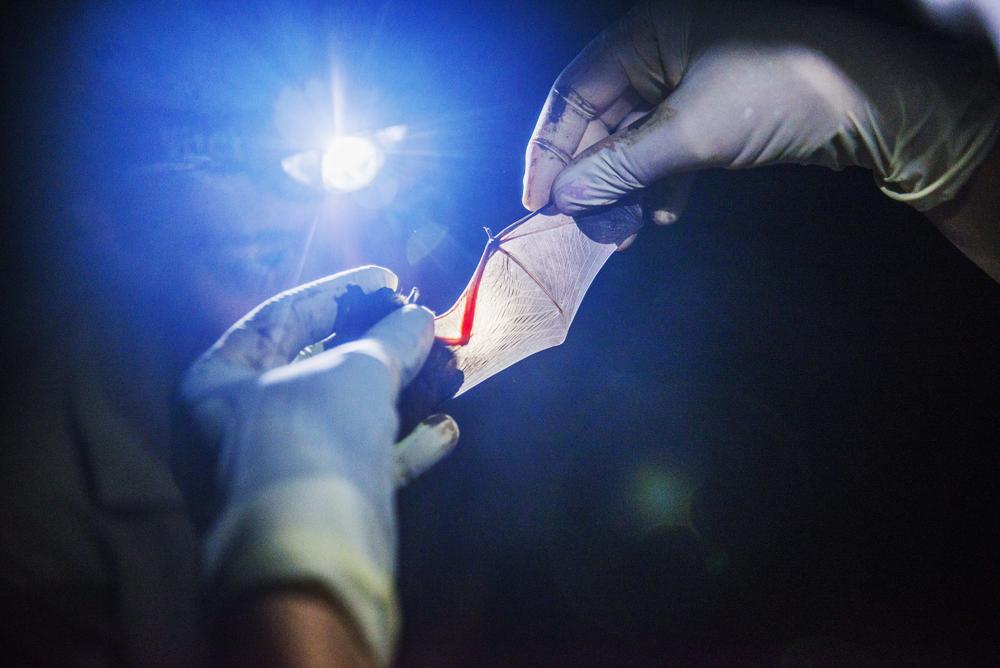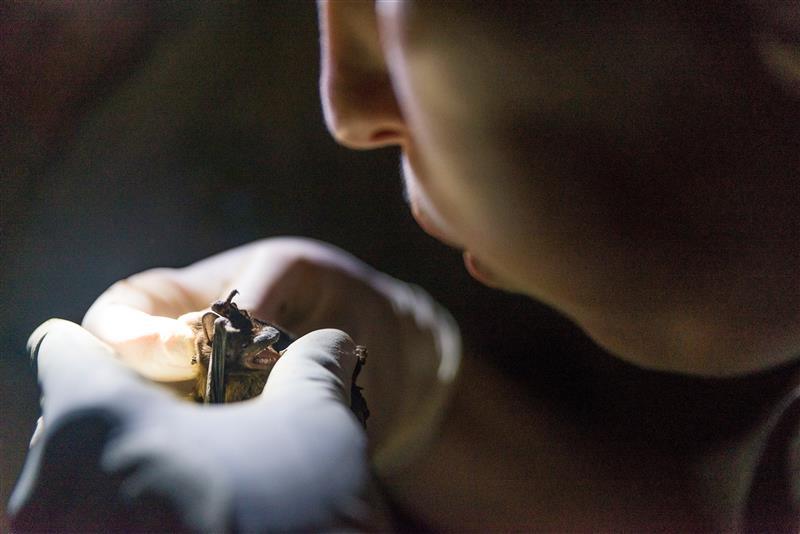
Caption
Researchers examine an evening bat while handling it for scientific measurements during a night of data collection on creek in Macon in 2015. The data collected that night is just one point in a just published seven year study of Georgia's bats.
Credit: Grant Blankenship/GPB



